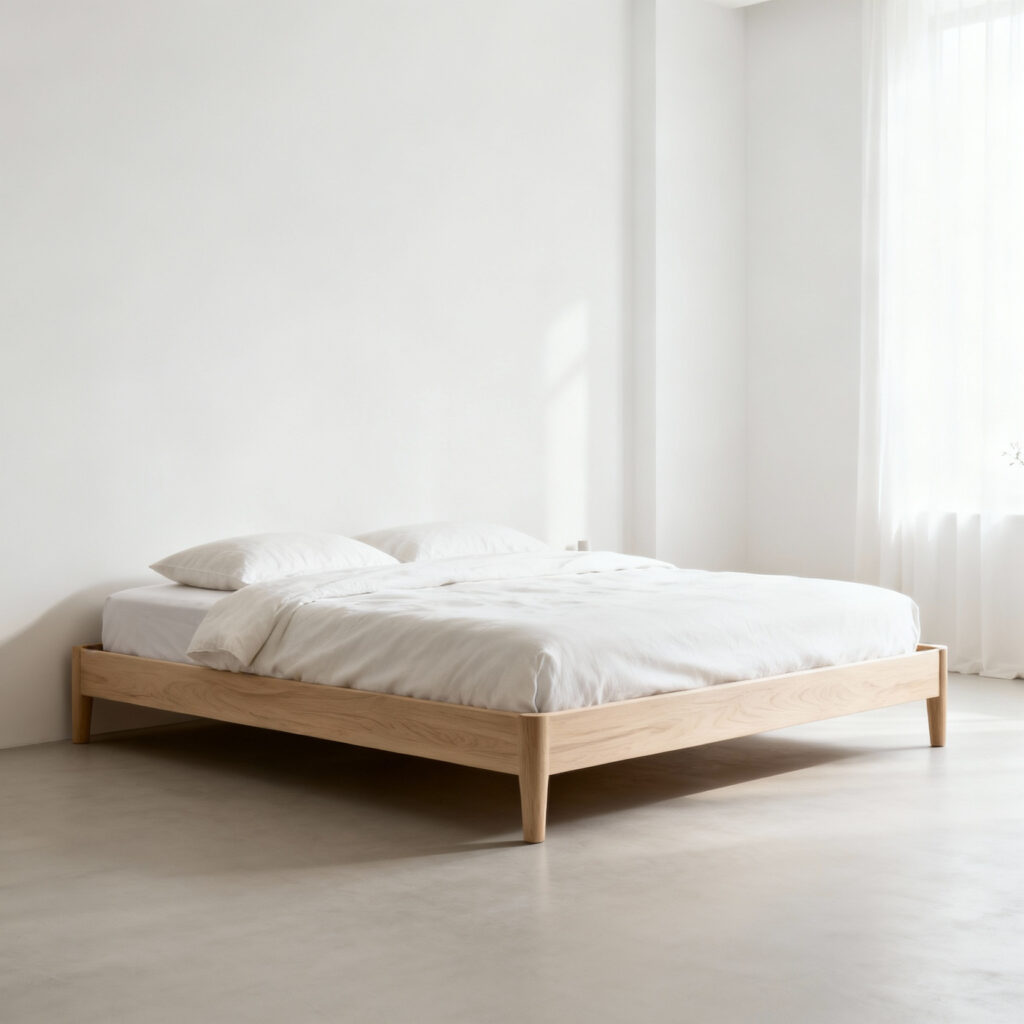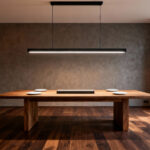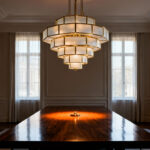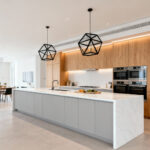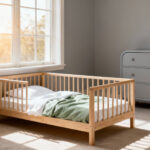Most people believe bedroom furniture is about filling a room based on trends and basic function. Interior design blogs repeat this idea. Home improvement shows preach it. Here’s what they’re not telling you: from my work analyzing the psychological impact of hundreds of residential spaces, I can confirm that your bedroom is a functional reflection of your inner world. The furniture within it sends constant, subtle cues to your subconscious. These 20 evidence-backed bedroom furniture ideas will show you how to move beyond simple decorating and start architecting a space that actively enhances your well-being. It’s not just about looks; it’s about creating a deeply resonant sanctuary.
Essential Bedroom Furniture Fundamentals
Before we can compose a symphony, we must understand the instruments. These foundational pieces are the core of your bedroom’s function and feel. Getting them right isn’t just a prerequisite—it’s the first step toward creating a space that works for you on a deep, psychological level.
1. The Bed Frame: Your Sanctuary’s Anchor
A bed frame is more than what holds your mattress off the floor. It’s the psychological and visual anchor of your entire room. Its material and scale set the immediate emotional tone. A heavy, solid wood frame communicates stability and permanence, creating a sense of being grounded. Conversely, a lighter, upholstered frame in a soft fabric can foster a feeling of comfort and gentle retreat. The goal isn’t just support for your body, but subconscious support for your mind.
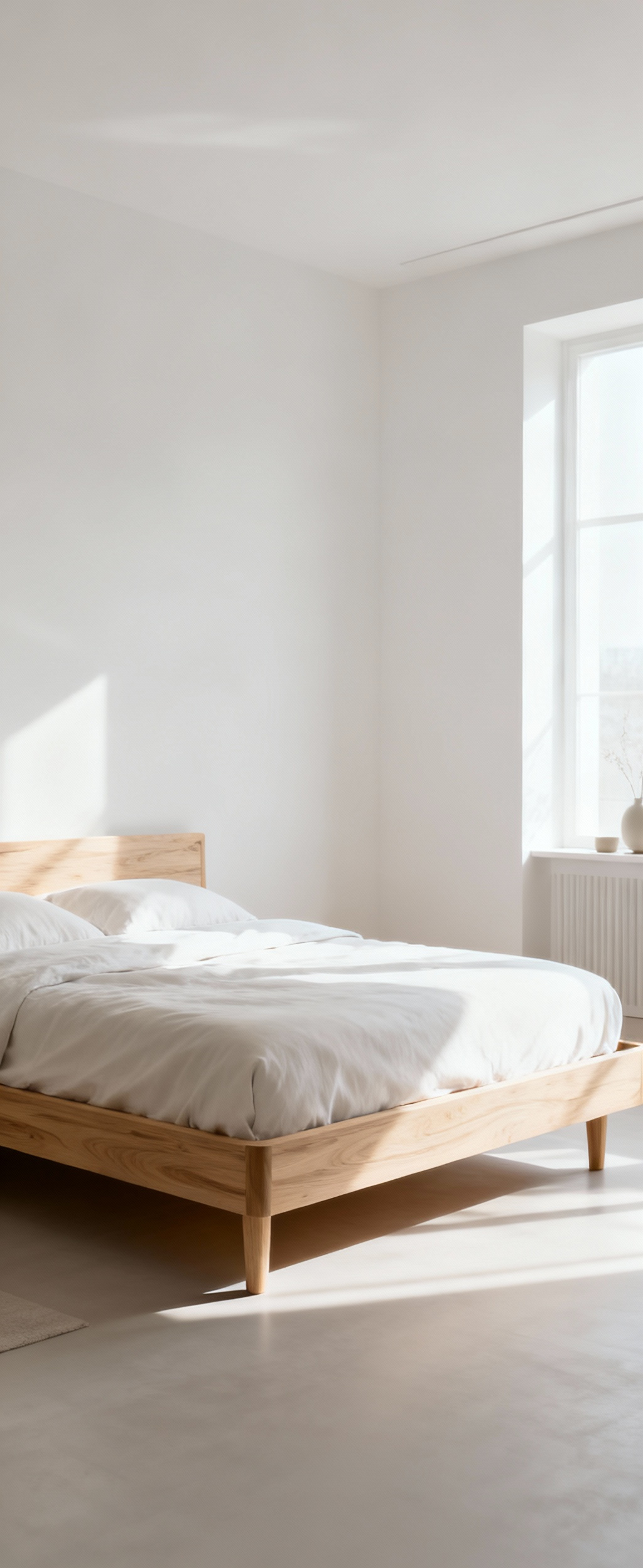
The headboard is especially critical—it acts as a symbolic guardian while you sleep, creating a feeling of safety and containment. In my color psychology specialist practice, I often guide clients toward headboard materials and colors that counter their daily anxieties. A client feeling overwhelmed by a chaotic work life might find deep calm in a simple, uncluttered oak headboard, while someone feeling disconnected might benefit from a plush, enveloping velvet that invites tactile comfort. Choosing a bed frame is your first, most powerful statement about the kind of energy you want to cultivate.
2. The Nightstand: A Curated Bedside Narrative
The nightstand is your most intimate surface. At a basic level, it’s a functional perch for a lamp and a book. But its true power lies in its role as a curated endpoint to your day and the first thing you see in the morning. A cluttered, chaotic nightstand signals unresolved tasks and mental static. A thoughtfully arranged one—with only essential, beautiful objects—creates a pocket of intentional calm.
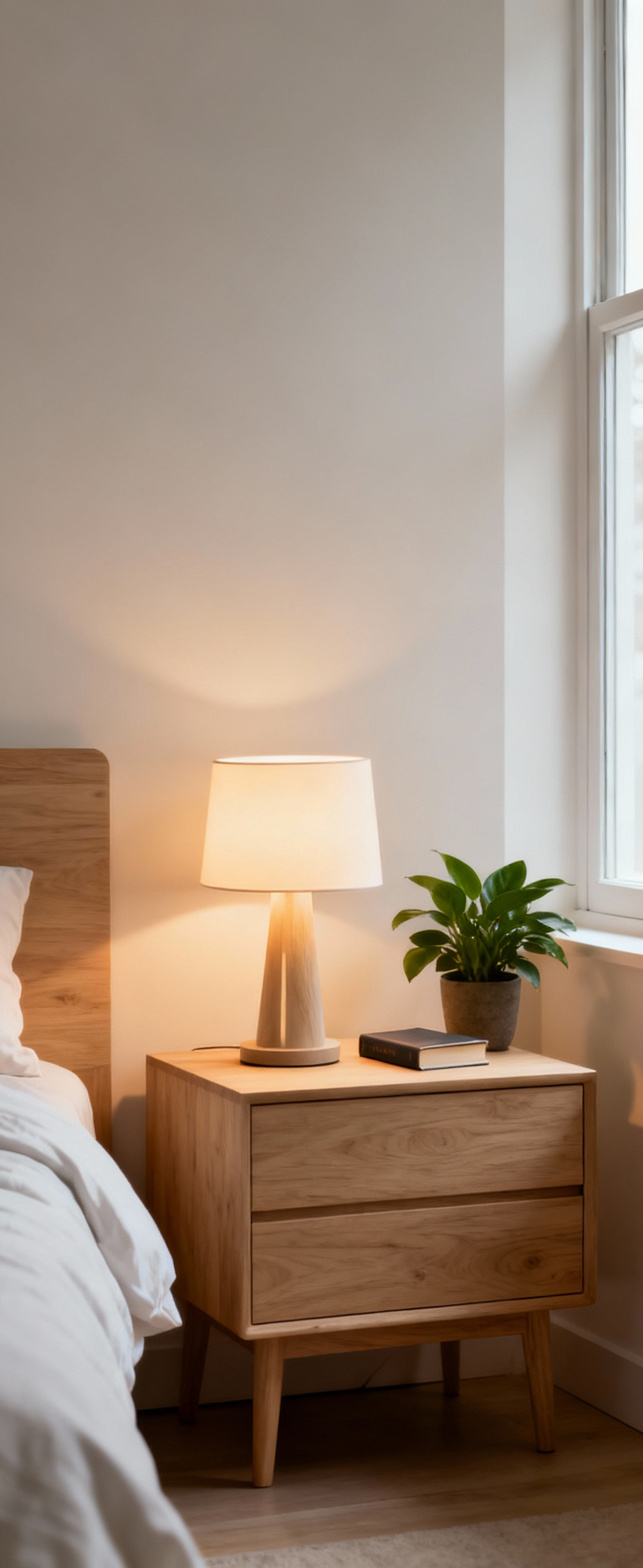
Think of your two nightstands as a framing device. Symmetrical tables create a feeling of order and predictability, which can be profoundly calming for some. Asymmetrical choices—say, a small table on one side and a narrow chest on the other—can introduce a dynamic, creative energy. This isn’t just about storage; it’s about crafting a final, serene impression before sleep. What story do you want your bedside to tell?
3. Layered Lighting: Sculpting Mood with Light
A single, harsh overhead light is an emotional sledgehammer. It flattens space and creates an institutional, uninviting atmosphere. A truly restorative bedroom relies on layered lighting. Start with soft, ambient light from a shaded fixture or floor lamp. Add focused task lighting—like a focused reading sconce by the bed—for specific activities. Finally, introduce accent light to create depth, perhaps a small lamp on a dresser.
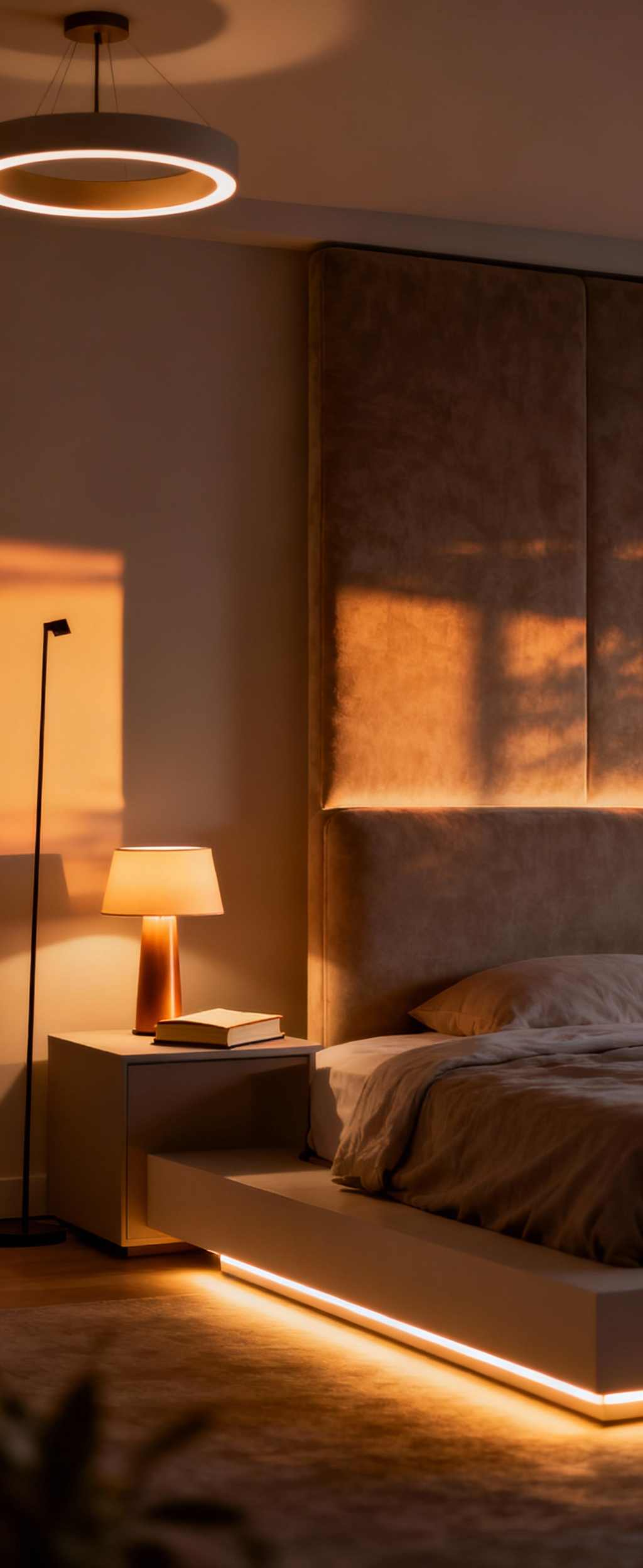
This approach gives you direct control over the room’s psychological state. Bright, cool light can feel energizing in the morning, but in the evening, you need warm, low light (around 2700K on the Kelvin scale) to signal to your brain that it’s time to produce melatonin and prepare for sleep. Putting every single light source on a dimmer is the most powerful, low-cost investment you can make in your sleep health and overall mood.
4. Wardrobes & Dressers: Discreet Storage for Mental Clarity
Clutter is a physical manifestation of stress. When your clothes are disorganized, your mind often follows. A wardrobe or dresser isn’t just a box for your stuff; it’s a tool for creating external order that fosters internal calm. The goal is to make the act of storing and retrieving items as frictionless as possible.
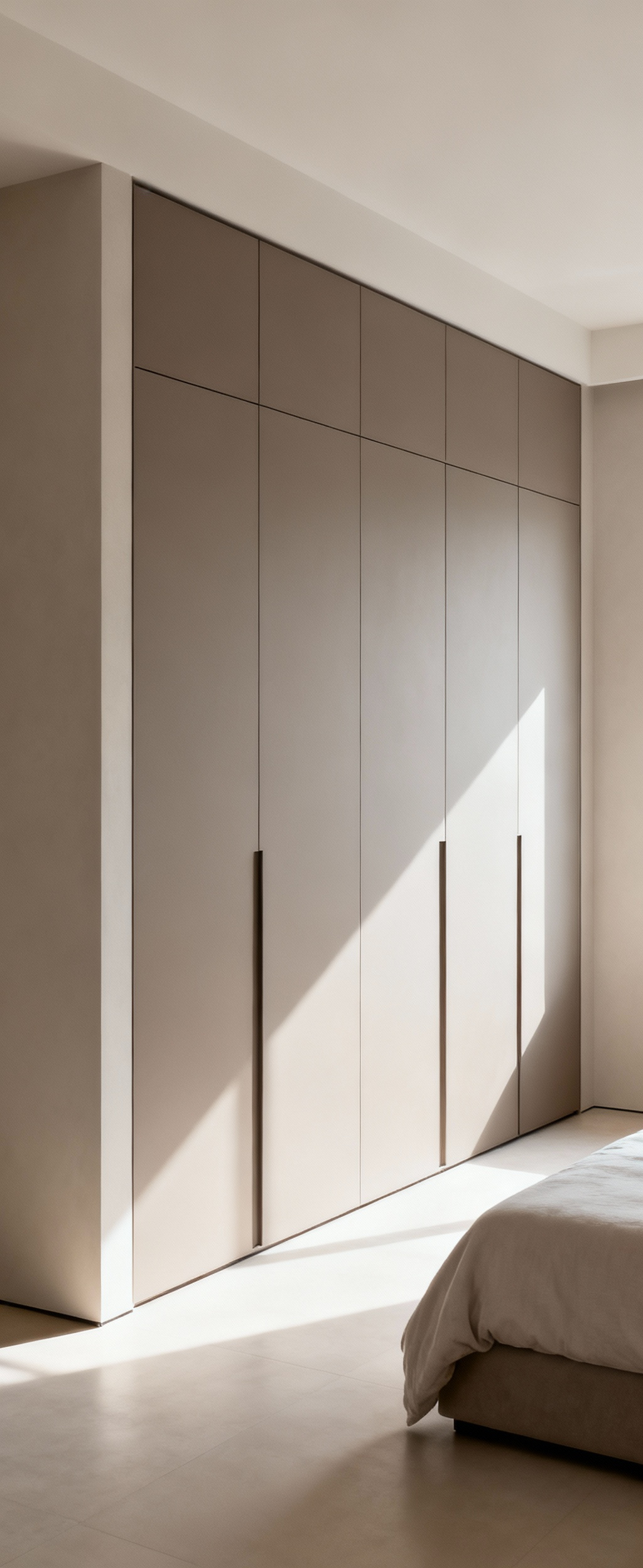
I’ve seen this play out time and again: a well-designed wardrobe system can genuinely reduce a client’s morning anxiety. Look for solutions that go beyond a simple hanging rail. Built-in units that stretch from floor to ceiling feel less like bulky furniture and more like part of the architecture, creating a seamless and uncluttered visual plane. Mirrored doors can also be a clever trick—they hide the contents while bouncing light around the room, making the space feel larger and brighter.
5. The Rug: Grounding Your Space Underfoot
A bare floor in a bedroom can feel cold, abrupt, and unsettling. A rug does more than add color; it creates a soft, defined zone of comfort that grounds the entire furniture arrangement. From a sensory perspective, the first thing your feet touch in the morning should be soft and welcoming, not jarringly cold. This simple transition can set a more positive tone for the entire day.
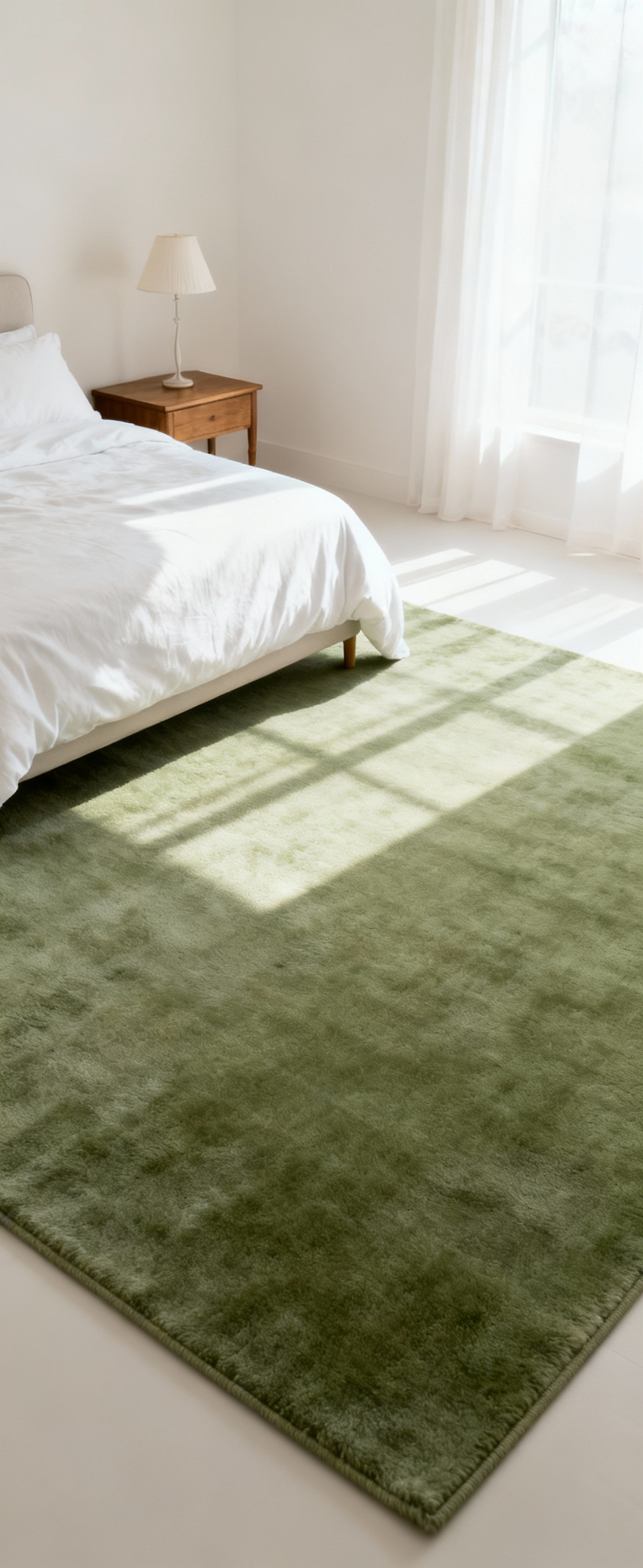
For the best effect, the rug should be large enough to extend at least 18-24 inches on either side of the bed. This creates a visually cohesive island, anchoring the bed and nightstands as a unified whole. It also has a significant acoustic benefit, absorbing sound and making the room feel quieter and more cocoon-like. A rug is a foundational piece that literally and figuratively provides a soft place to land.
6. The Mirror: A Strategic Tool for Light and Depth
A mirror’s job isn’t just to reflect your appearance. Its primary design function is to manipulate light and the perception of space. Placing a large mirror opposite a window is the oldest trick in the book for a reason: it can nearly double the amount of natural light in a room and create the illusion of a second window, which psychologically opens up the space.
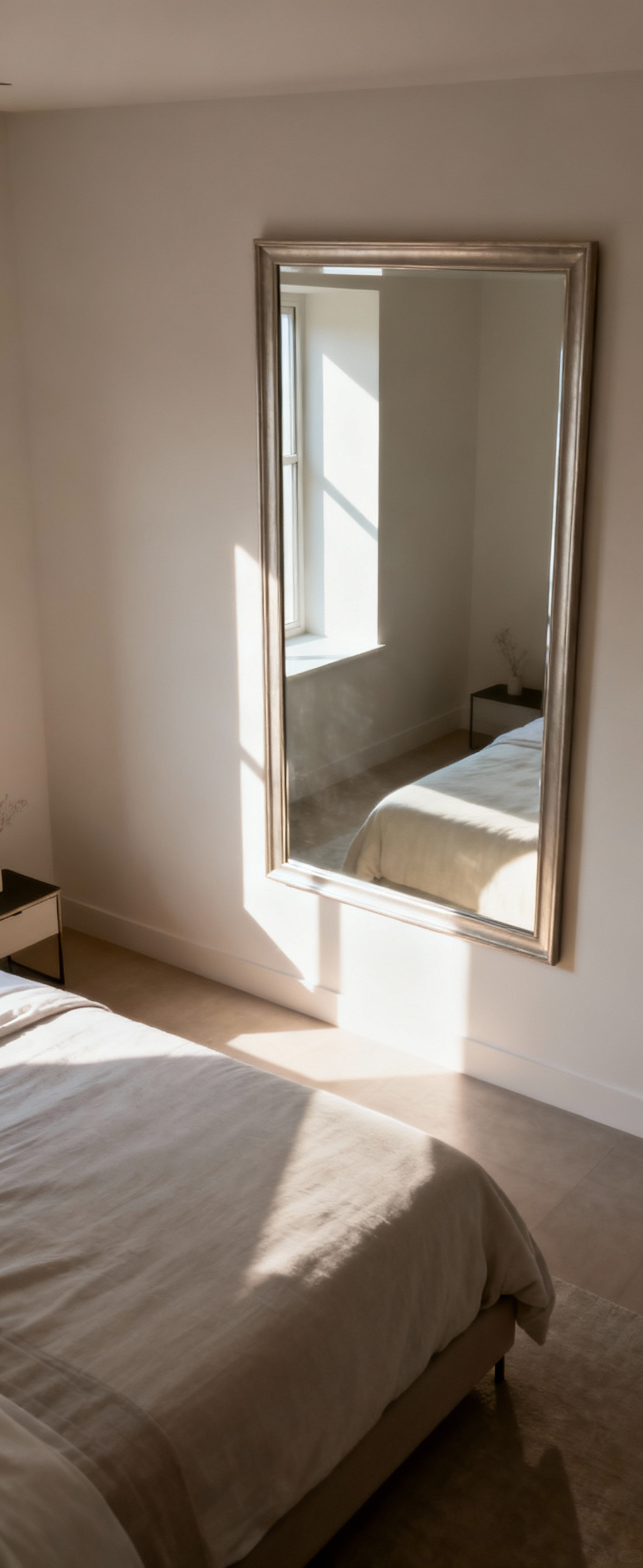
Be mindful of what your mirror reflects. A mirror facing a cluttered corner will only amplify the chaos. A mirror facing the bed can be unsettling for some people, creating a sense of being “watched.” Instead, position it to reflect a beautiful view, a favorite piece of art, or an open doorway to create a sense of expanded space and continuous flow. The frame is also key—it can act as a piece of wall art in its own right.
7. Seating for Serenity: The Personal Retreat Nook
A bedroom shouldn’t just be for sleeping. Introducing a dedicated seating area—even a small one—sends a powerful message: this is a space for rest and rejuvenation in all its forms. A comfortable armchair, a chaise lounge, or even a simple bench at the foot of the bed creates a designated zone for reading, meditating, or simply pausing.
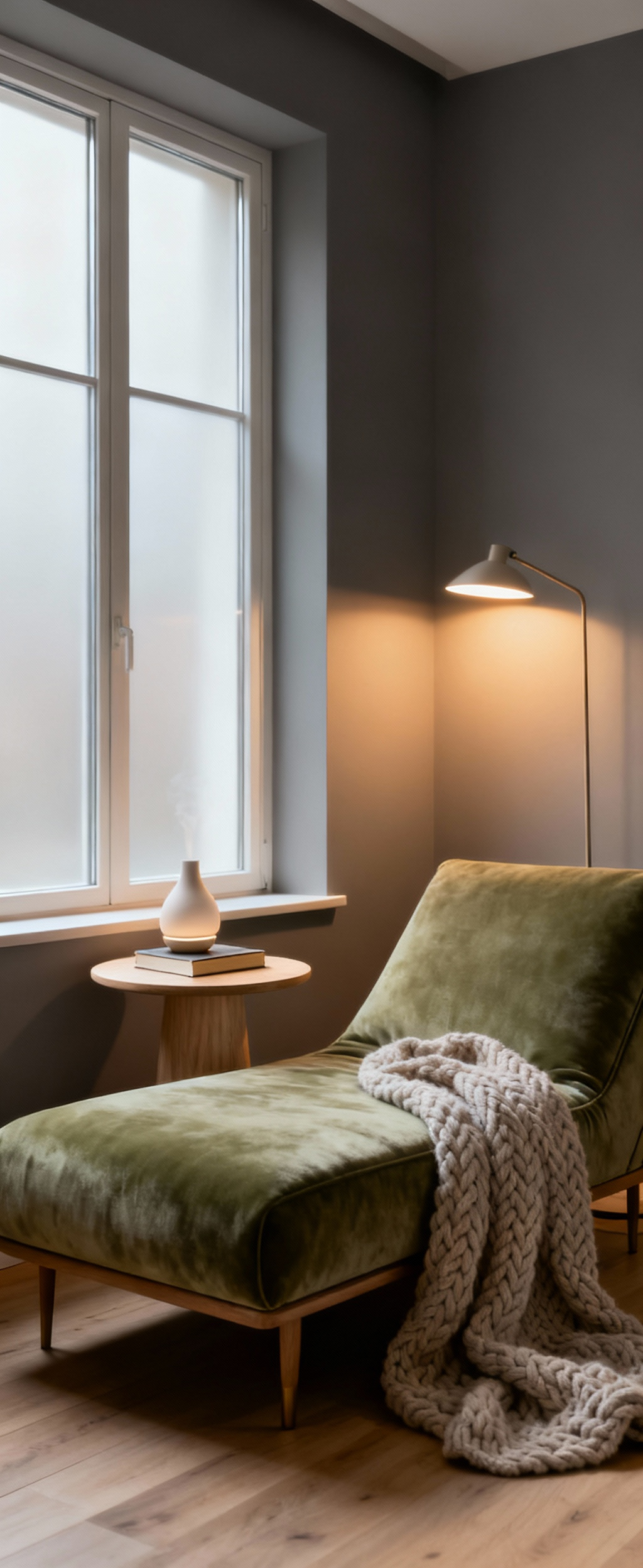
This simple act of creating a “zone within a zone” elevates the room’s function immeasurably. It gives you a place to decompress that isn’t your bed, which helps strengthen the psychological association between your bed and sleep. Pair your chair with a small side table and a reading lamp, and you’ve created a complete, self-contained retreat nook—a critical feature for true sanctuary design.
Elevating Your Bedroom Furniture Approach
With the fundamentals in place, we can move on to the principles of arrangement and cohesion. This is where we go beyond individual pieces and begin to think like a designer, orchestrating how these elements work together to create a space that feels not just furnished, but harmonious.
8. Arranging for Flow: The Art of Clear Pathways
How you move through your bedroom has a direct impact on how you feel within it. A room with awkward, narrow pathways and blocked access points creates subconscious friction and stress. The primary goal of your layout should be to establish clear, intuitive circulation paths—from the door to the bed, to the closet, to the window.
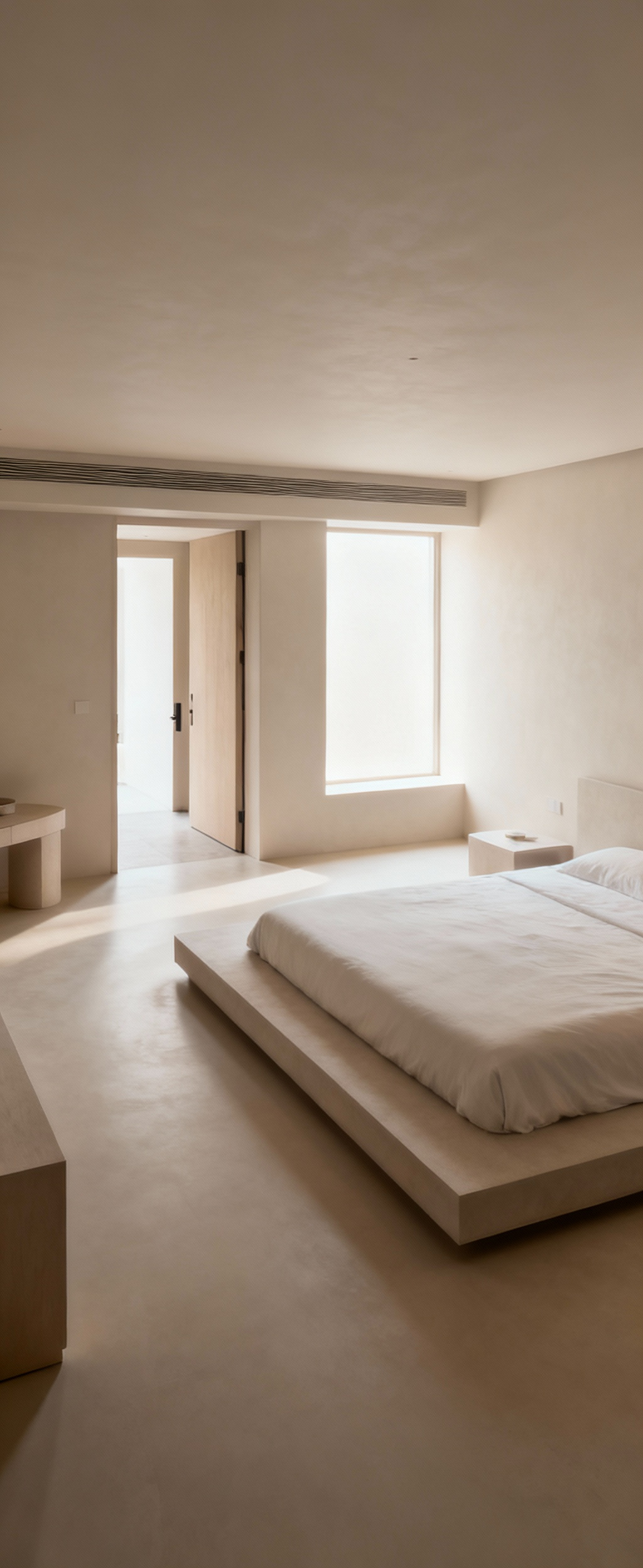
A good rule of thumb is to allow for at least 30 inches for major walkways. This isn’t just practical; it creates a sense of openness and ease. Think about your visual pathways, too. When you stand in the doorway, your eye should be drawn toward a pleasant focal point—usually the bed—without being interrupted by a jarring piece of furniture. A clear path for the body translates to a clear, calm path for the mind.
9. Mastering Visual Weight: A Game of Balance
Every object in your room has “visual weight”—a perceived heaviness based on its size, color, texture, and form. A huge, dark-wood armoire carries immense visual weight, while a glass-and-metal side table feels light. Achieving balance isn’t about making everything symmetrical; it’s about distributing this weight so the room feels stable and settled.
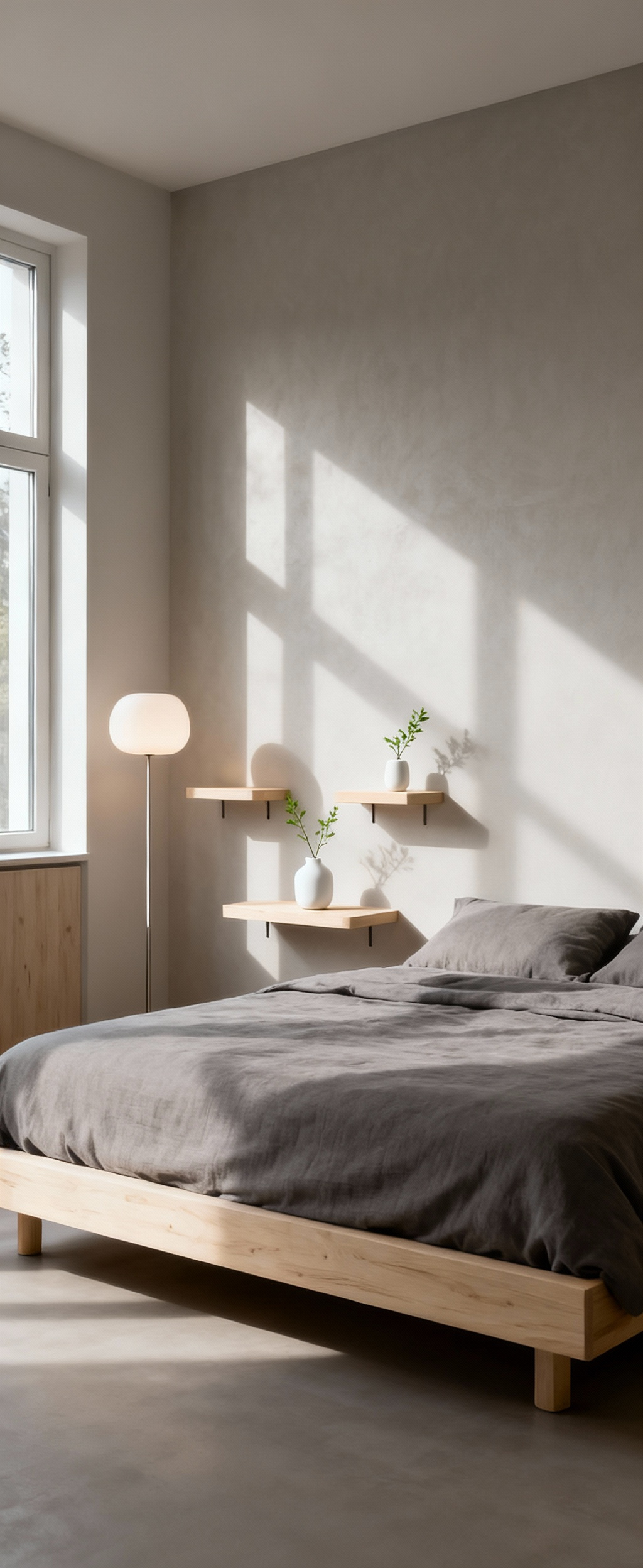
If you have a heavy bed and headboard on one wall, balance it with something of similar perceived weight on the opposite wall, like a long, low dresser or a combination of a seating area and a large piece of art. What I tell my clients is to squint their eyes. When you do this, the details fade, and you just see the “blobs” of mass and color. This simple trick makes it immediately obvious if one side of the room feels heavier or more cluttered than the other.
10. The Color Story: Psychology in Finishes and Textiles
Color is the emotional language of a room, and your furniture is a primary speaker. The finish of your wood, the color of your upholstered headboard, and the fabric of your accent chair all contribute to the room’s dominant color story. Cool colors like soft blues, greens, and grays tend to lower blood pressure and promote calm, making them ideal for a sleep sanctuary.
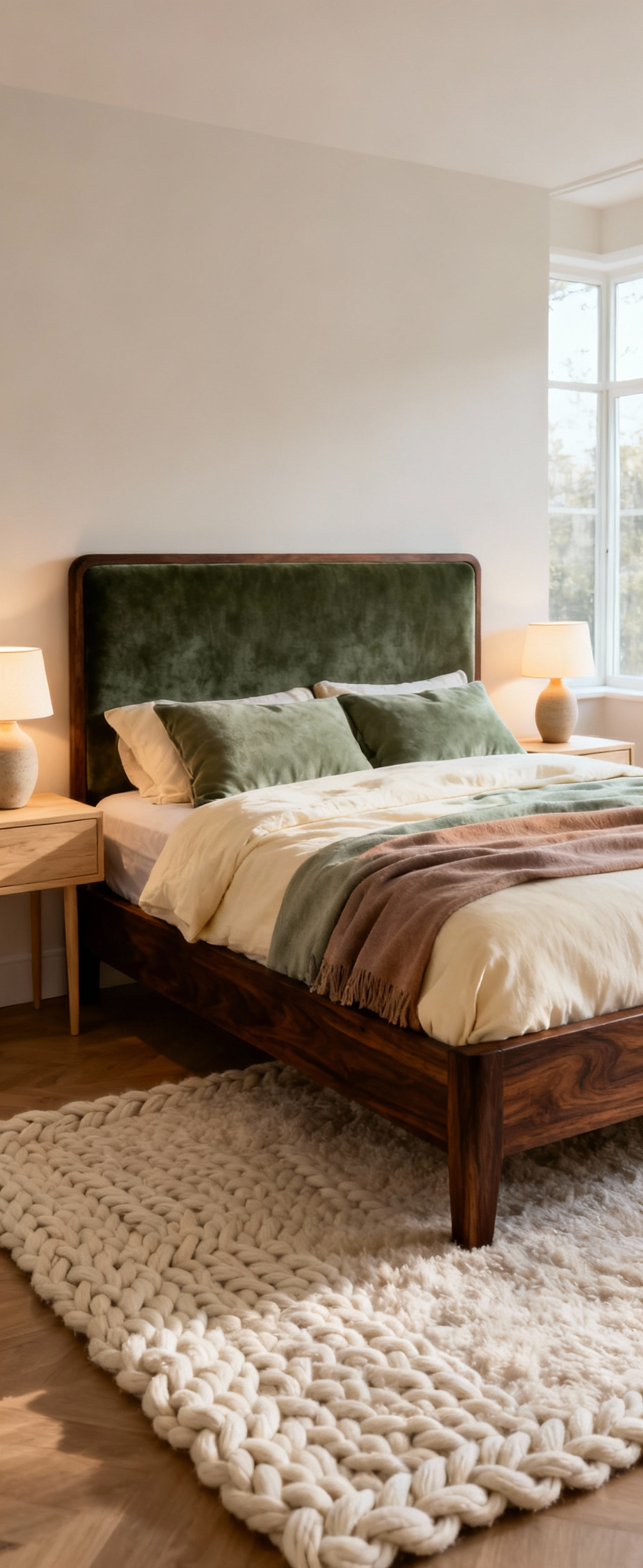
Don’t be afraid of deep, saturated colors. A myth I constantly have to bust is that dark colors make a room feel small. In reality, a deep navy or charcoal can make walls recede, creating a sense of infinite, cozy depth—perfect for a bedroom. Use textiles—bedding, curtains, throws—to introduce secondary and accent colors. They’re a low-commitment way to layer in personality and emotion.
11. Textural Depth: Weaving a Sensory Landscape
A room decorated in a single texture—everything smooth and flat—feels sterile and lifeless. The key to a rich, inviting space is layering a variety of textures. Think of the interplay between a rough-hewn wooden dresser, a soft cashmere throw, crisp linen sheets, a sleek metal lamp, and a plush wool rug. Each material engages the senses differently.
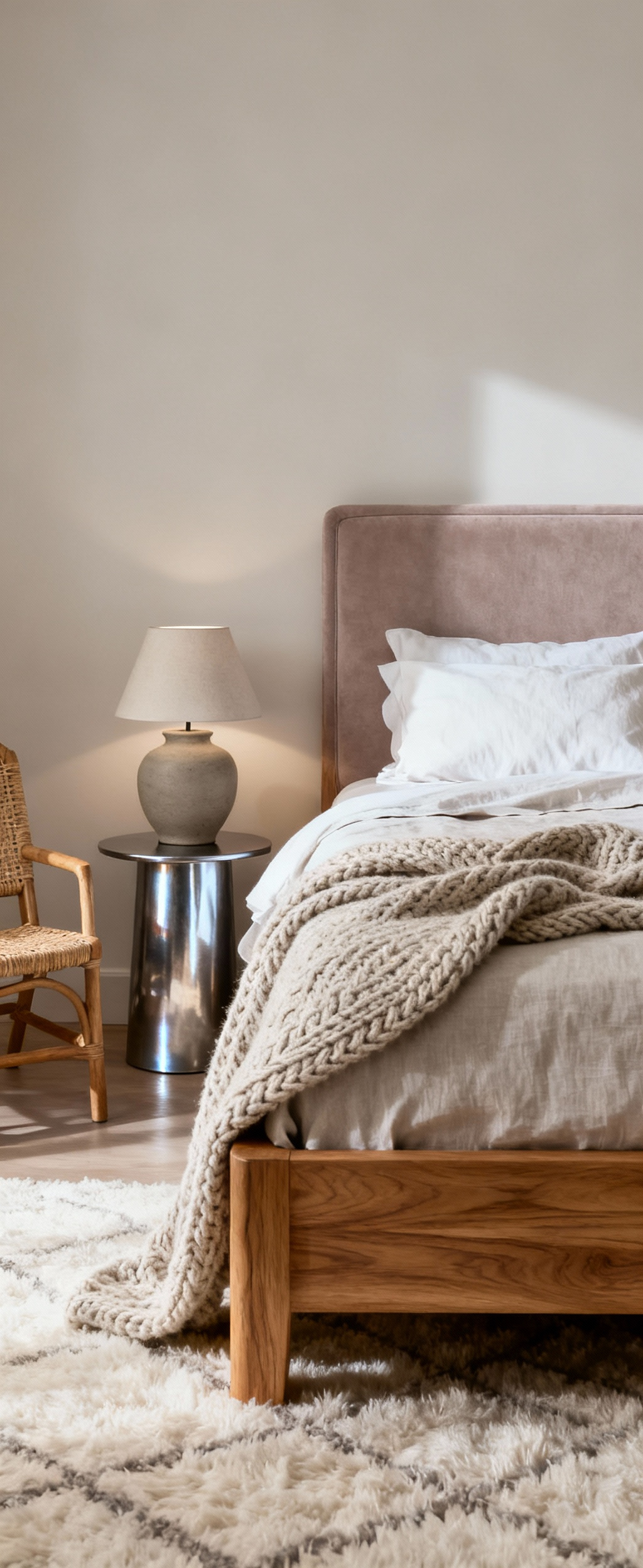
This textural conversation creates sensory richness and complexity. Juxtaposing hard and soft, rough and smooth, matte and shiny makes a room far more interesting and comforting. It invites touch and makes the space feel more grounded and real. This is a subtle but incredibly powerful tool for making a bedroom feel like a deeply personal, enveloping haven.
12. Personalized Vignettes: Styling Surfaces as Narrative Hubs
Your dresser and shelves should be more than just landing strips for clutter. They are opportunities to tell your story. Grouping objects together in a thoughtful arrangement—what designers call a vignette—turns a simple surface into a point of personal expression. Think of it as a small, curated exhibition of you.
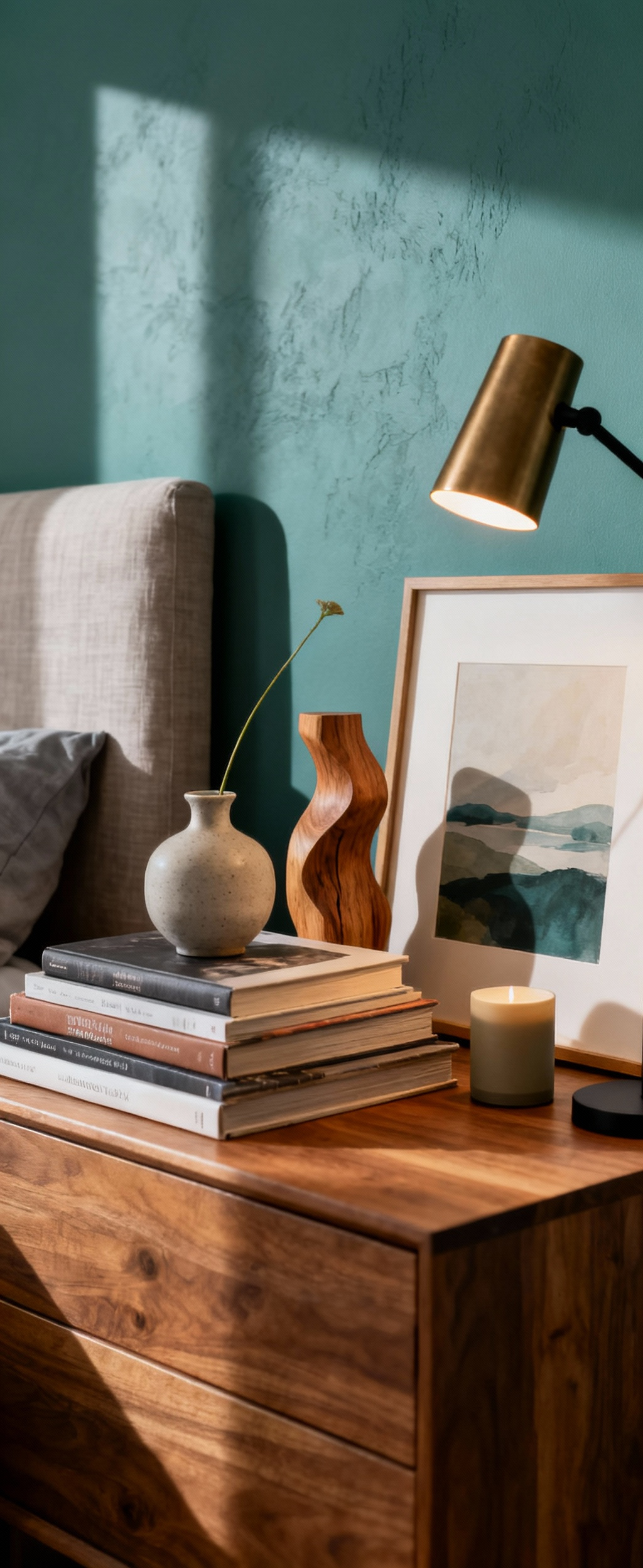
Follow the simple design rule of threes and vary the height and texture of your objects. A tall vase, a low stack of books, and a small, sculptural object create a balanced composition. Mix personal items like photos with beautiful objects like a ceramic bowl or a small plant. These vignettes become focal points that ground your space in your own identity and memories.
13. Accent Tables: Deploying Versatile Support
While a nightstand serves the bed, an accent table can serve any corner of your room that needs a little more function or style. Tucking a small table next to a reading chair provides a place for a cup of tea. Placing one in an empty corner with a plant on top can bring a dead space to life.
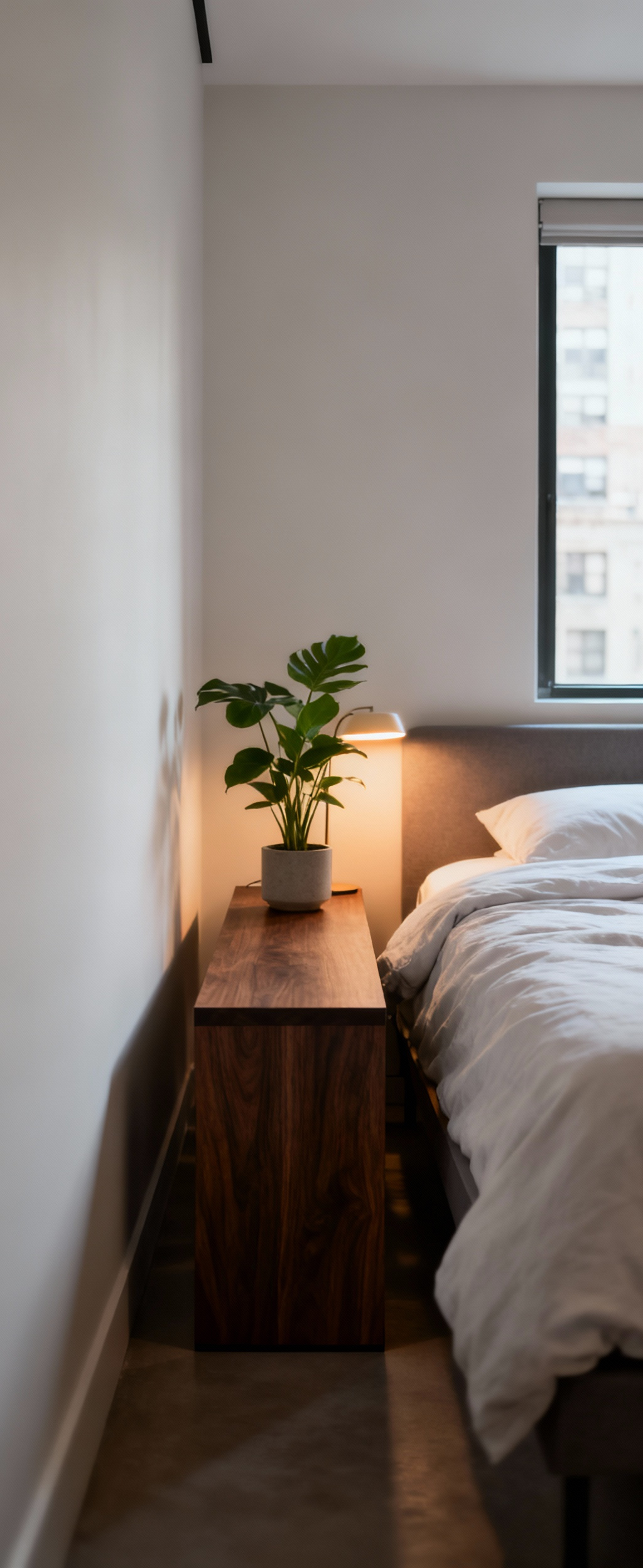
Think beyond traditional table shapes. A stack of vintage suitcases, a ceramic garden stool, or a minimalist metal cube can all function as an accent table while adding far more personality than a generic piece. These are the versatile support players that can solve functional problems and fill aesthetic gaps throughout the room.
14. Discreet Digital Integration: Taming the Tech
In a room dedicated to rest, visible technology is the enemy of tranquility. Wires, chargers, and blinking lights are constant reminders of the outside world’s demands. The goal is to integrate technology seamlessly so it serves you without being seen.
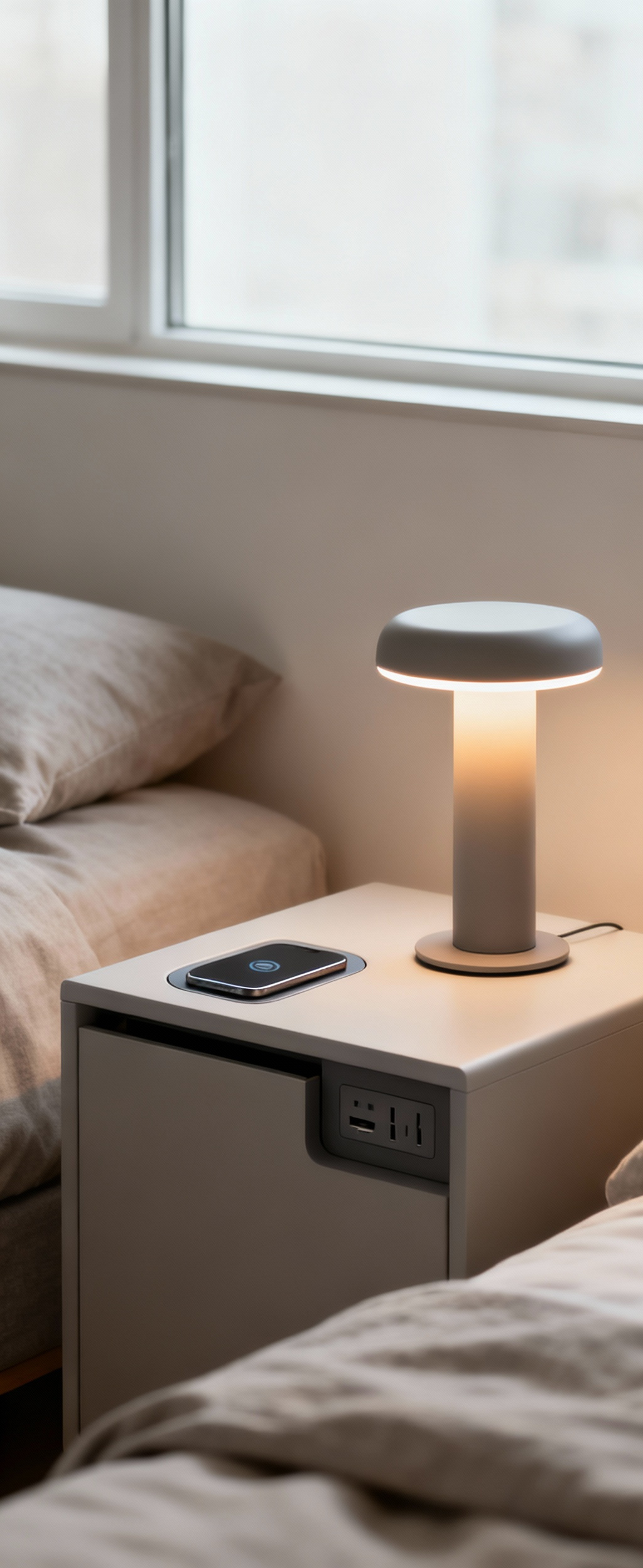
Look for furniture designed with this in mind: nightstands with built-in charging drawers, headboards with integrated reading lights, or media cabinets that conceal a television behind closed doors. Even simple cable management solutions—like sleeves or adhesive clips to hide cords behind furniture—can make a huge difference in reducing visual noise and creating a more serene environment.
Professional-Level Bedroom Design & Holistic Integration
This is where we synthesize everything into a holistic philosophy. It’s about designing a cohesive ecosystem where every element works in concert to support not just your comfort, but your long-term health and well-being. This is how you create a bedroom that is truly transformative.
15. Biophilic Design: The Power of Natural Connection
Biophilia is the innate human tendency to connect with nature. Integrating natural elements into your bedroom isn’t a trend; it’s a response to a deep-seated psychological need. Furniture made from natural materials like wood, rattan, stone, and wool connects us to the outside world and has a demonstrably calming effect.
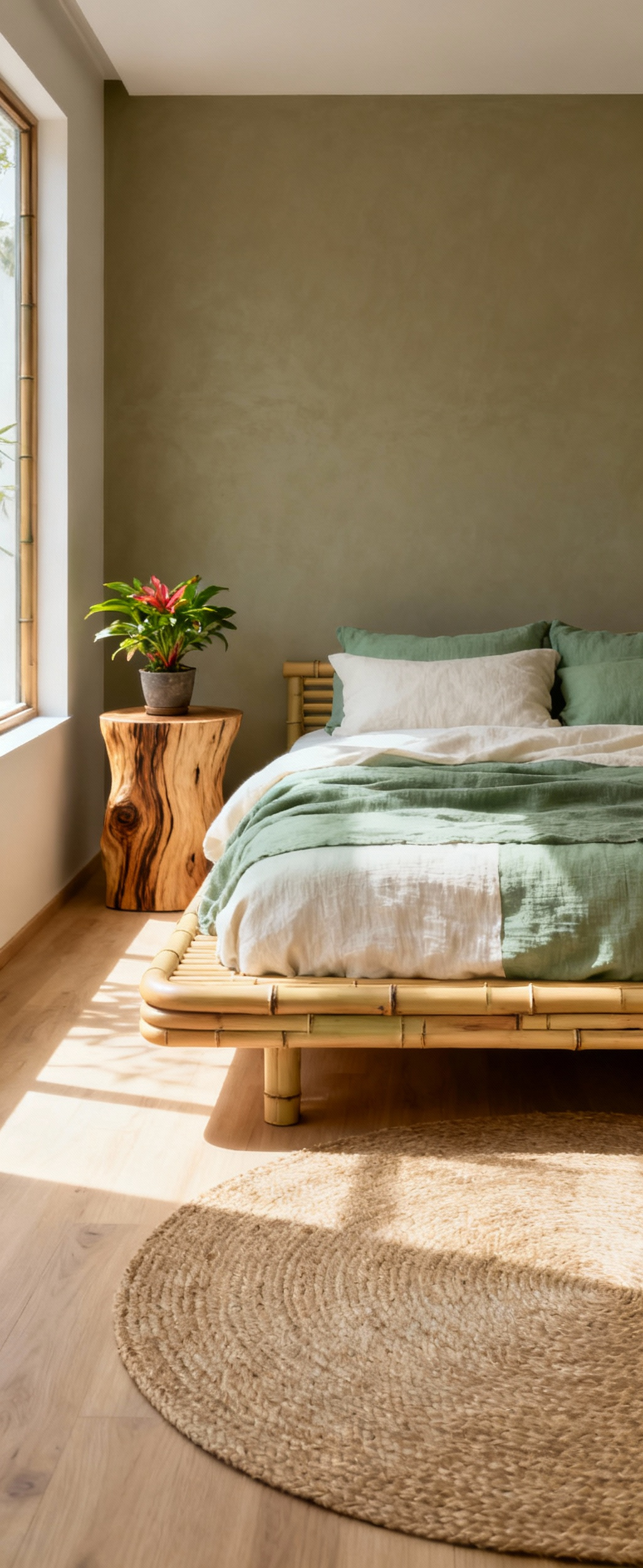
Look for furniture with organic, curved shapes rather than sharp, rigid lines. Position a chair to face a window with a view of trees. Most importantly, fill your space with plants. They purify the air and provide a vital, living presence. A bedroom that honors biophilic principles is one that feels restorative on a primal level.
16. Ergonomic Excellence: Designing for Your Body
Ergonomics is the science of designing for human well-being and efficiency. In the bedroom, this goes far beyond just a good mattress. It’s about ensuring every point of interaction with your furniture supports your body’s natural state. Is your nightstand at a height where you can comfortably reach your water without straining? Does your reading chair provide proper lumbar support?
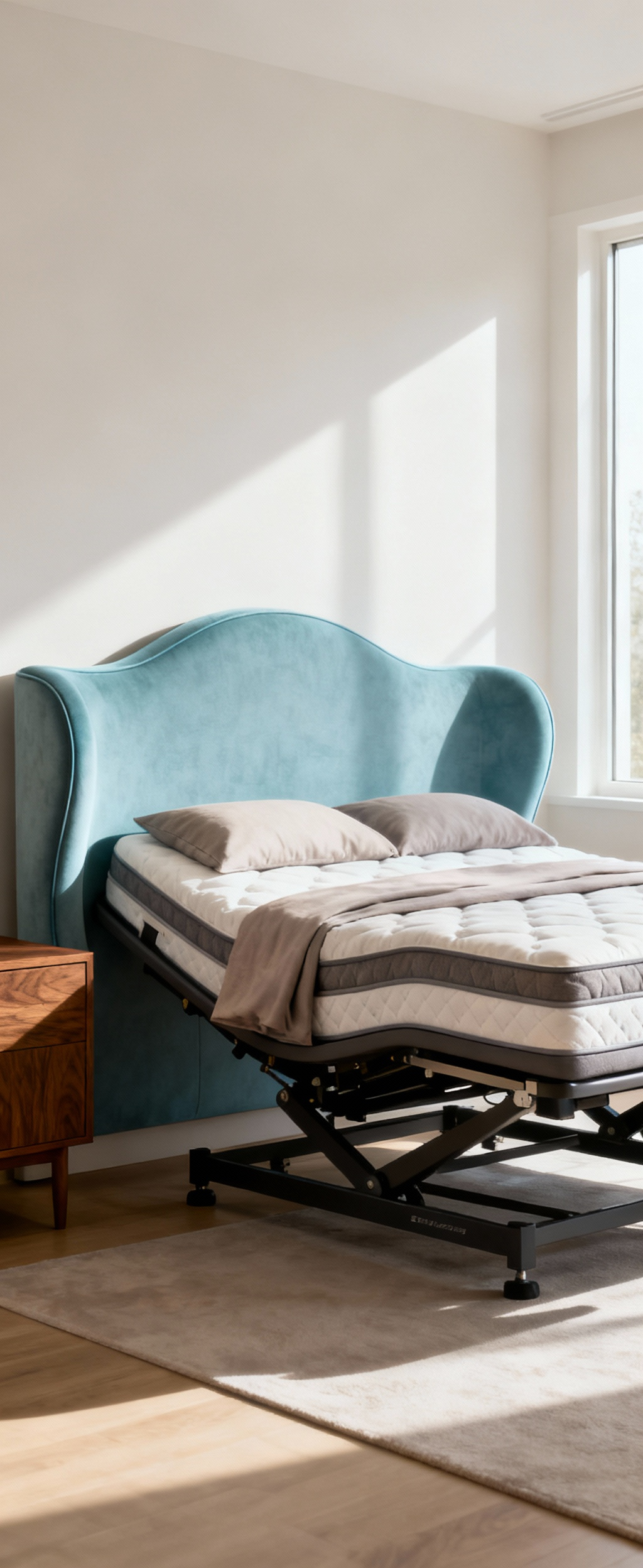
If you work from your bedroom, an adjustable desk and a supportive chair are non-negotiable for long-term spinal health. Even the height of your dresser drawers matters—placing frequently used items in the most accessible drawers reduces daily physical strain. An ergonomic bedroom is one where your body feels effortlessly supported, reducing physical stress that can disrupt sleep.
17. Acoustic Absorption: Designing for Quiet
We often underestimate the impact of sound—or the lack of it—on our peace of mind. A bedroom with too many hard surfaces (wood floors, bare walls, large windows) will be noisy, as sound waves bounce around freely. The key is to introduce soft, sound-absorbing materials through your furniture and decor.
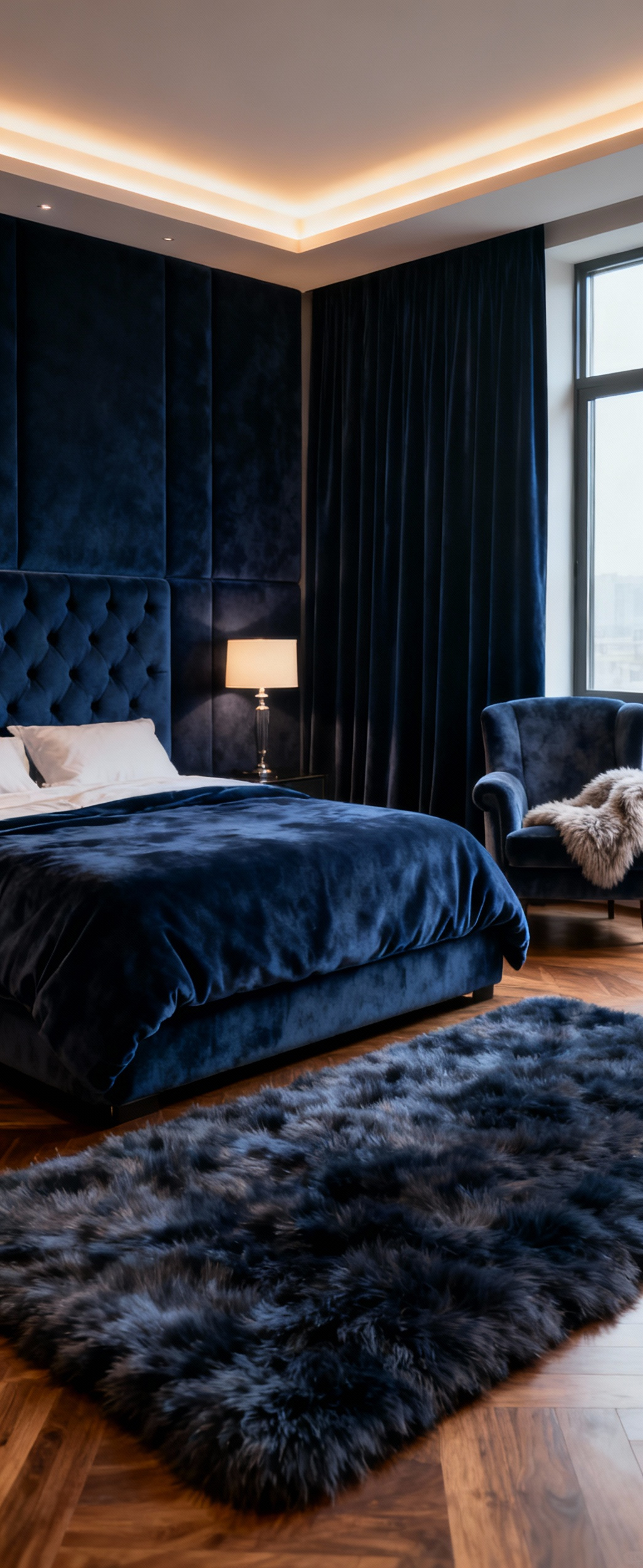
An upholstered headboard is one of the most effective tools for this, as it absorbs sound right near your head. Thick rugs, heavy curtains, and plush armchairs are also acoustic workhorses. Even a bookcase filled with books acts as a natural sound diffuser, breaking up sound waves. Creating a quiet room is fundamental to creating a peaceful one.
18. Multi-Functional Minimalism: Doing More with Less
In any bedroom, but especially a small one, every piece of furniture should earn its keep. Multi-functional furniture isn’t just about saving space; it’s about simplifying your environment to promote mental clarity. An ottoman with hidden storage, a bed with drawers underneath, or a wall-mounted desk that folds away are all examples of intelligent, hard-working design.
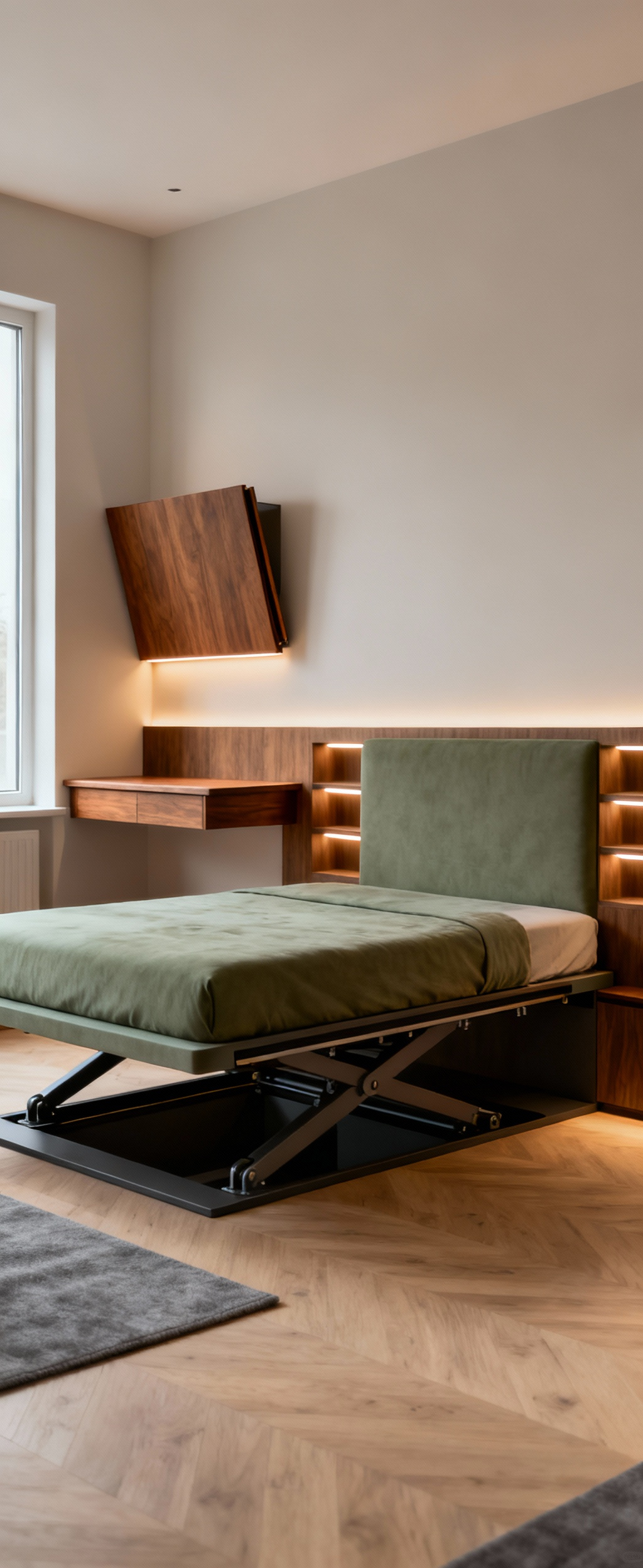
The goal is to reduce the total number of items in the room while increasing its overall functionality. This minimalist approach leads to less visual clutter and a more serene, open atmosphere. It’s about choosing fewer, better pieces that serve you in multiple ways. I learned this lesson when designing a tiny city apartment; we created a single custom millwork piece that served as a headboard, nightstands, and a wardrobe. It was the key to making the small space feel both functional and expansive.
19. Designing for Circadian Rhythm: Working with Your Body Clock
Your body’s internal clock is regulated by light. A professional approach to bedroom design works with this natural cycle, not against it. This means having blackout curtains or shades that can create total darkness for sleep, which is essential for melatonin production.
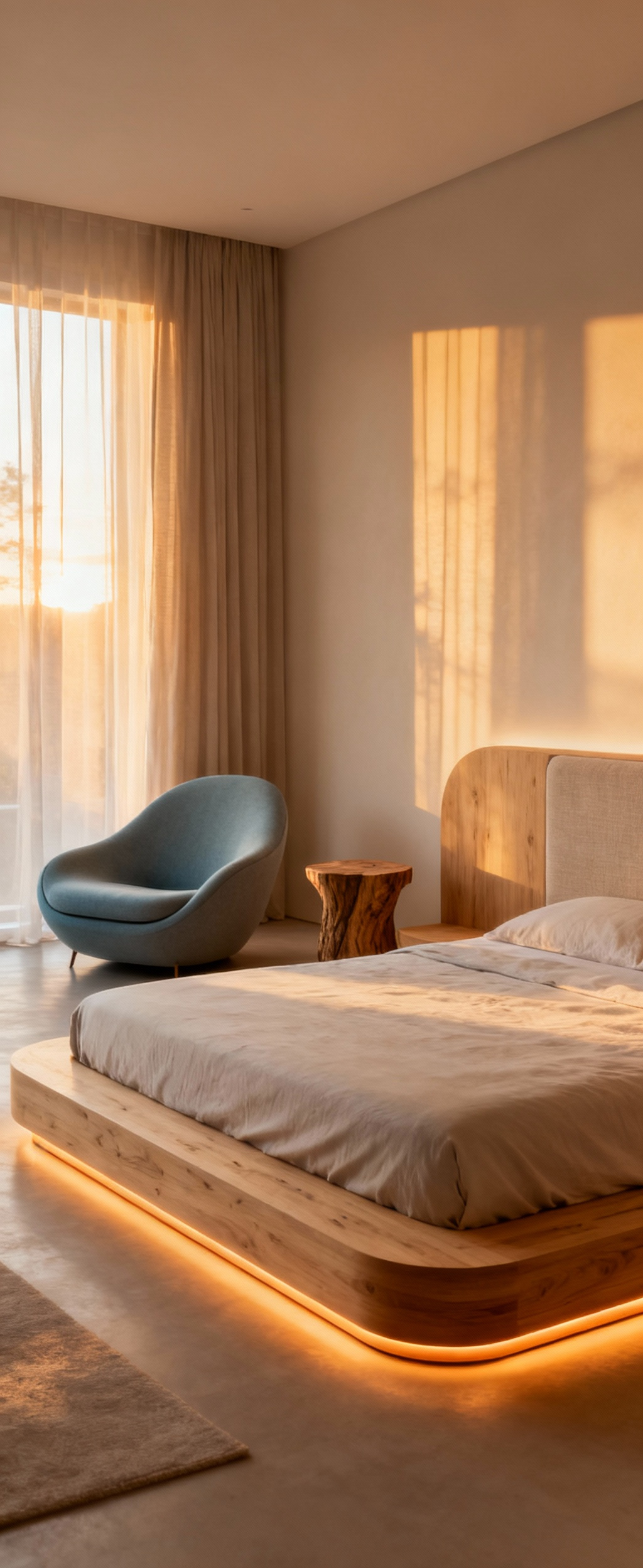
Furniture placement matters, too. If possible, position your bed so you get gentle, indirect natural light in the morning to help you wake up naturally. Avoid highly reflective or glossy furniture finishes that can create jarring reflections of light when you’re trying to wind down. A bedroom that supports your circadian rhythm is a powerful tool for better health.
20. Legacy Pieces: Investing in Timeless Quality
Finally, resist the urge to furnish your room with trendy, disposable pieces. Investing in one or two heirloom-quality items—a beautifully crafted solid wood dresser, a classic armchair design—changes your relationship with your space. These pieces are built with superior materials and craftsmanship, designed to last for generations, not just a few seasons.
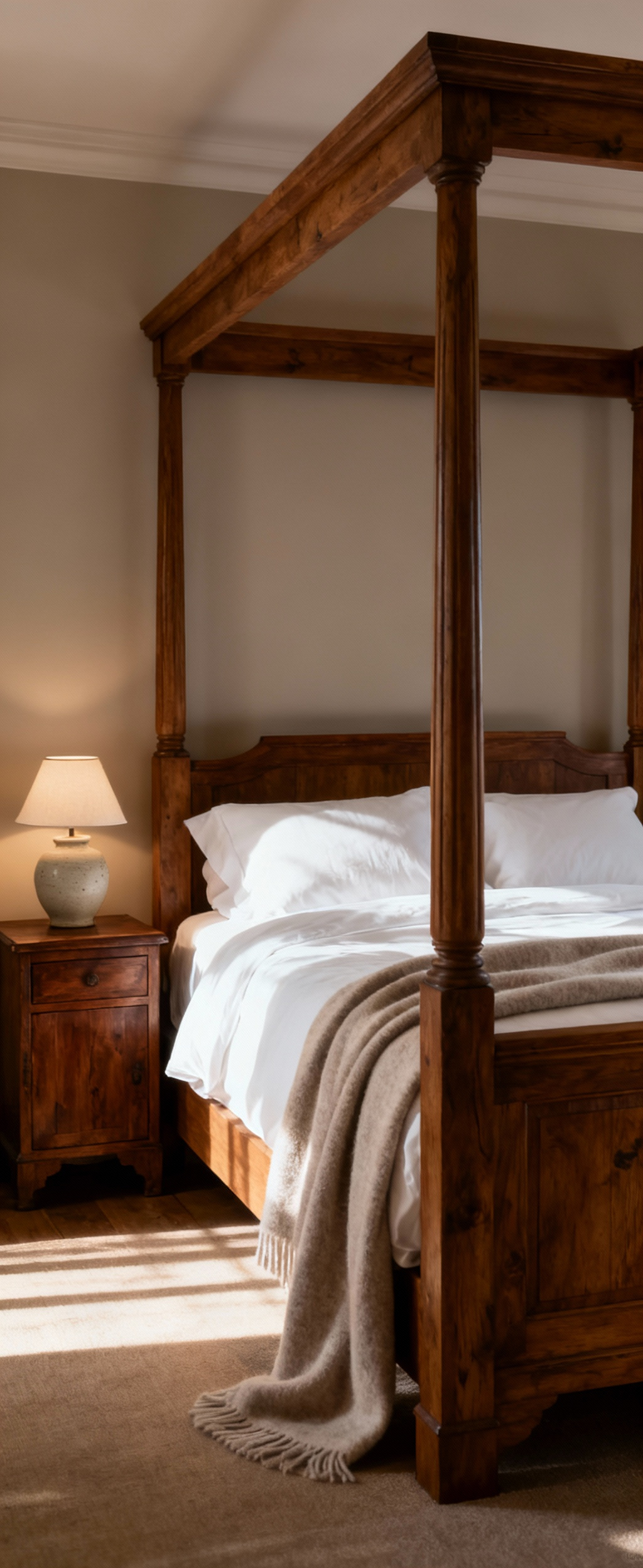
There’s a psychological weight and permanence to well-made furniture. It grounds a room and gives it a sense of history and soul. A legacy piece isn’t an expense; it’s an investment in enduring style and a rejection of throwaway culture. It’s the final step in creating a bedroom that is not just a collection of objects, but a deeply personal and timeless sanctuary.
Conclusion
We began this journey by looking past the superficial idea that bedroom design is simply about what’s in style. After exploring these 20 transformative ideas, it’s clear that a truly exceptional bedroom is an ecosystem, one where every piece of furniture plays a crucial role in your psychological well-being. It is the art of arranging not just objects, but emotions.
The real power here is understanding the ‘why’ behind each choice—why a certain texture feels calming, why a clear pathway reduces stress, why layered light supports better sleep. You now have the framework to go beyond decorating and start designing with intent. Use these ideas to create a space that doesn’t just look good, but profoundly feels right—a sanctuary that actively restores you, night after night.
